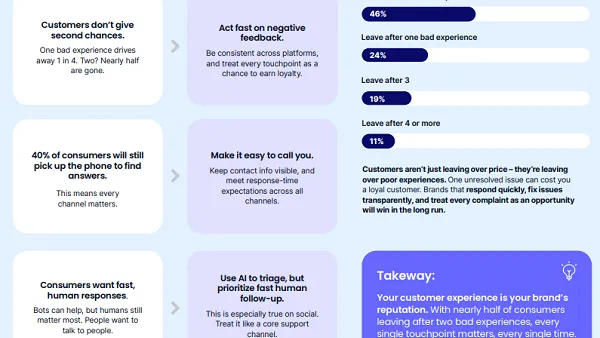It's no secret that click-through rates have been a central measurement for digital ads. However, the tide may be turning. More and more research has begun appearing that contradicts a direct relationship between the CTR and ROI.
As the general attitudes towards CTR begin to shift, several companies are attempting to form what could be the new standard in measurement. See what these firms are doing to move digital ad measurement forward.
Yahoo
Scientists from Yahoo Labs have been researching what the best determinate is for what people enjoy doing online. The lab recently released a blog post full of its research on what measurement most accurately predicts real interest in content.
According to the research, click-through rates don’t accurately portray viewer interest because clicks can be fueled by click-bait headlines or links can be accidently clicked. Instead, Yahoo Labs suggests that what is calls “dwell time” – time spent reading or viewing a page – more truthfully shows viewers interest.
Yahoo drew a few key conclusions about dwell time that seem to support the idea that time spent is a better indicator of true interest than click-through:
- Users have less dwell time per article on mobile or tablet devices than on desktops.
- Users spend less time on slideshows than on articles.
- Users dwell more on longer articles, up to 1,000 words. Beyond that limit, there is very little correlation to article length.
- Users dwell the most on articles in the topics of politics or science and the least on articles on food or entertainment.
During its research, Yahoo discovered that when it modified its recommendation algorithm to focus on dwell time, the content recommendation models performed better – for both dwell time and CTR. Yahoo’s research and leadership position could help others be persuaded to step away from CTR and focus more on time spent.
Chartbeat
For some time, real-time analytics firm Chartbeat has been an advocate for switching to CTR and pageviews to attention minutes as the main form of measurement for digital ads. To help move along the idea, Chartbeat has published multiple studies on the subject.
In 2013, Chartbeat introduced more features to its online analytics tool to help publishers get a better idea of how long readers were sticking around and actually engaging with the site –rather than only knowing how many click-through pageviews the site received. By measuring things like scrolling, video views, and keystrokes, Chartbeat is able to offer a more comprehensive alternative to pageviews. That way, publishers get to focus on engaging content that keeps people around rather than just offering up click-bait headlines. Media buyers get a more dedicated and engaged set of eyes on their ads.
Fast forward to 2014, Chartbeat’s advocacy and continued research into dumping the CTR for attention minutes earns the analytics firm accreditation from the Media Rating Council – an organization that sets standards for the measurement of online content and advertising. The accreditation helps to give Chartbeat credibility in its idea of attention minutes while also adding fuel to the fire that is growing around ditching CTR as a main metrics for online ads.
Chartbeat has been working with publishers like The Financial Times, the Economist, and Upworthy to build programs where they charge for attention rather than clicks. So far, these relationships are in the early processes, but if a major publication can get on board – it could be the example needed to help shift the industry as a whole to paying for attention.
Nielsen/xAd
Mobile ad-tech firm xAd recently commissioned Nielsen to conduct a study on CTR to help prove the measurement was outdated and an inaccurate measurement of a digital – especially mobile – ads. The research underscored what xAd already believed to be true – that CTR holds little value as a measurement.
Not only did the study discover that CTR by itself is a poor indicator of ad performance – the research actually suggests that CTR may have a negative correlation to other capturing metrics like calls, directions and store visits. When CTR campaigns are optimized for mobile, it negatively affects secondary actions like calls and directions.
Ultimately, the study from xAd and Nielsen was able to show that using CTR alone is not only neglecting other metrics that are more representative of ROI and ad effectiveness, but that utilizing CTR campaigns can actually negatively affect ad results overall – something the industry needs to hear to shift ideas of ad measurement and costs.














